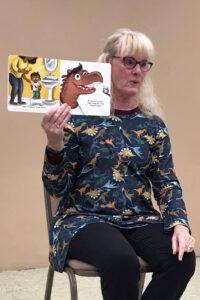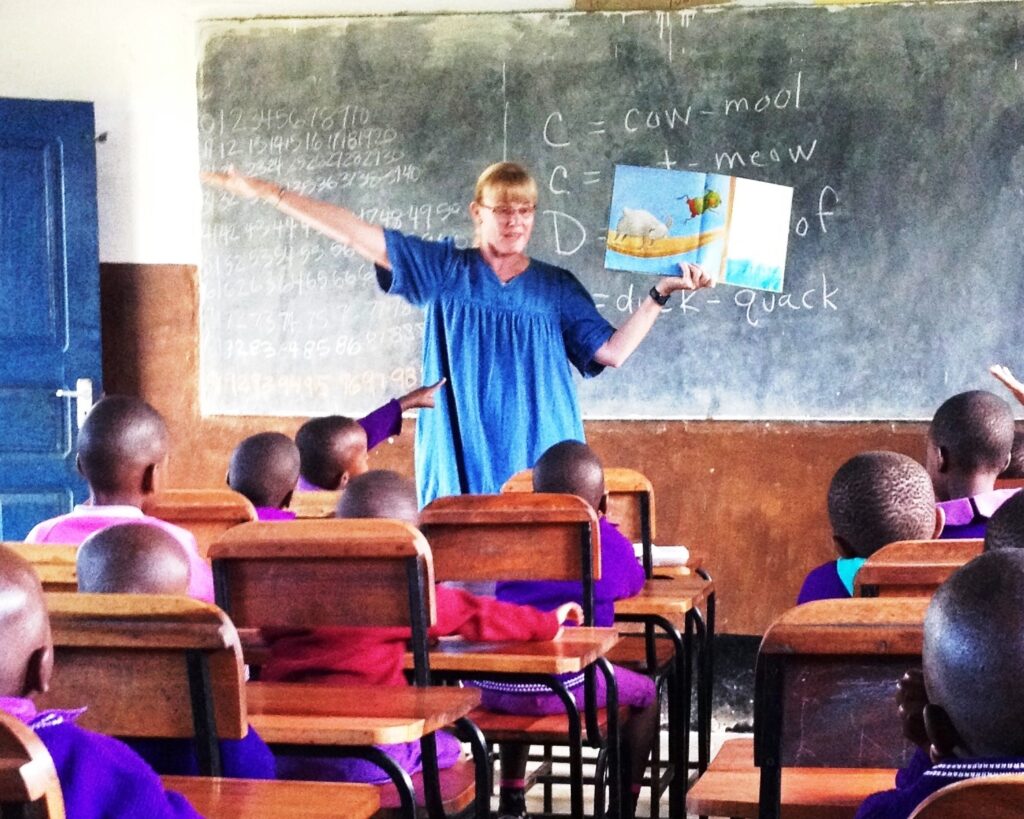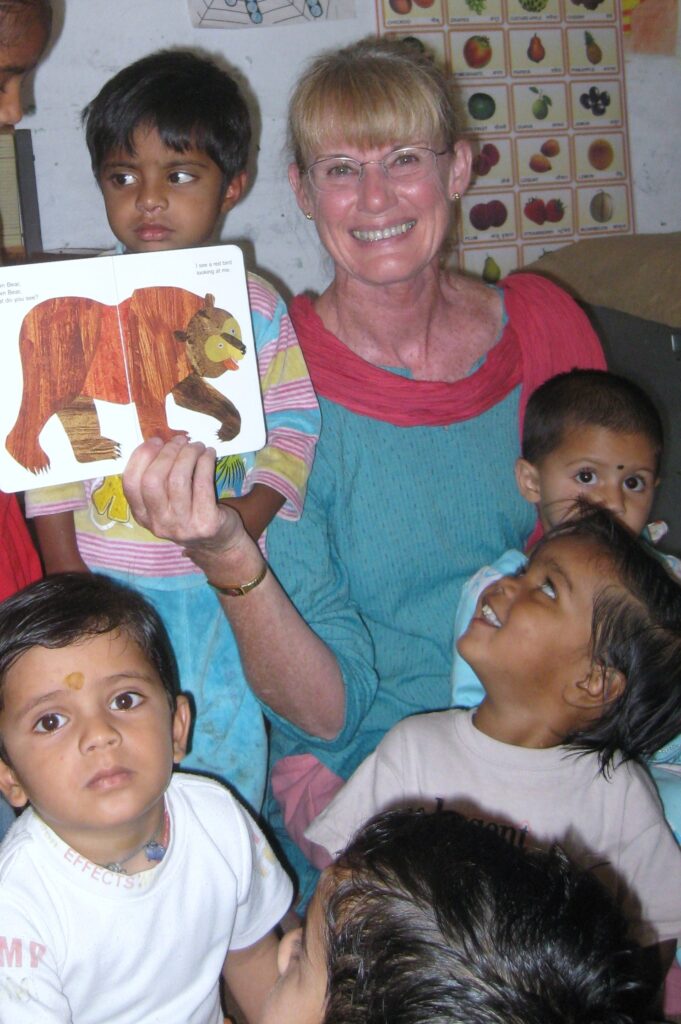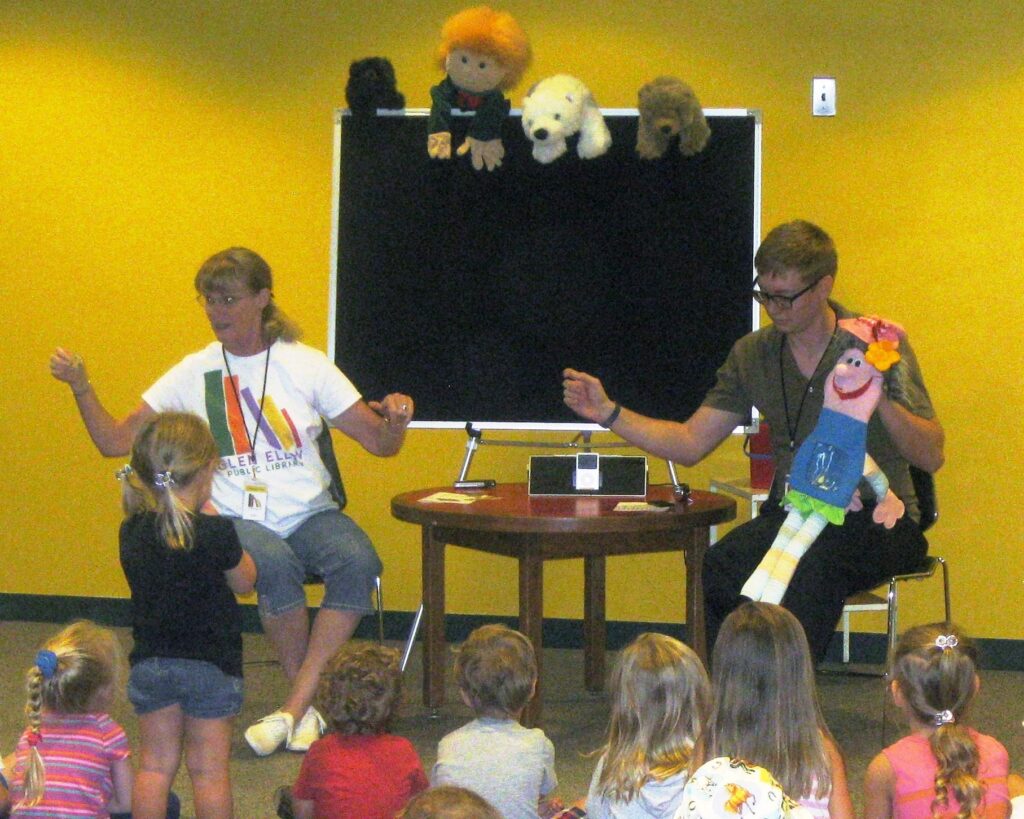Libraries buy quality books for all ages in the children’s department and hope to match the book with the child who needs it most. But one collection tugs on our heartstrings to the point we sometimes buy a second copy and hide it in the back room! Those are the truly great “read-aloud” books for preschool story time.
Any book can be read aloud, of course, but not all books are suitable to share with a group. Picture the setting: a librarian, probably wearing glasses, has 20-25 children on the floor. Mothers are sitting nearby checking phones with even younger children in their laps. After an opening song, the attention span is reset to about 4 minutes for many of the children and only 30 seconds for a few. The librarian picks up a book to read.

Topics
Storytime happens all year on every subject of interest to 3-5-year-olds. Public librarians are always looking for holiday read-aloud books as well as evergreen topics like seasonal change, trucks, dinosaurs, colors, numbers, and fairy tales. Stories that engage children physically (while seated!) are a bonus.
Cover
The cover is the hook for the reading. It should excite the kids about the story – showing the main character or subject of the book. The title color and typeface must be easy to read in less-than-perfect light.
Format of the Book
The entire book will be held in one hand, open so the picture can be seen even if it stretches across two pages. Flaps, foldouts, and noise buttons must be easy to use while the book is held steady. Try holding different books – horizontal and vertical, board books.

Picture
Every picture must move the story forward. The text only enhances the visual on that page. Important elements should be large enough to be seen from 6-8 feet away without a cluttered background.
Page Turns
Page turns must not interrupt the flow of the story. The best ones heighten anticipation of what comes next.
Page 1…and 32
Jump right into the story! If background is necessary, weave it into pages 2-3. By page 4, all characters and the plot should be introduced. Make sure the end of the story is so complete and satisfying that the librarians will not need to say “The End” to let them know the book is over.

Words per page Never describe what the picture shows. The time it takes to read one page cannot exceed the time span of 3–5-year-olds to look at the picture. The book is 500 words maximum.
Type Size
Plan a simple font, large enough to read out of the corner of one’s eye, even with bifocals! If the words and a picture overlap on the page, make sure the word color contrasts for legibility.
Flowing Language
If rhymed, it must be perfect enough to read correctly on the first reading. If it is not rhymed, the words must be in a logical order with any “difficult to pronounce” explained. Words can be lyrical if they are also easy to read. Refrains that children repeat engages them further and can bring wandering attention back.

Whatever WIP is on your desk, look at it through the Read Aloud lens. Librarians will thank you! (And you DO want to be nice to librarians!)

Multi award-winning author Robin Currie holds a Master of Library Science from the University of Iowa but learned story sharing by sitting on the floor leading over 1000 story times! She has sold 1.7 M copies of her 40 storybooks and writes stories to read and read again!



No Comments